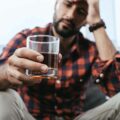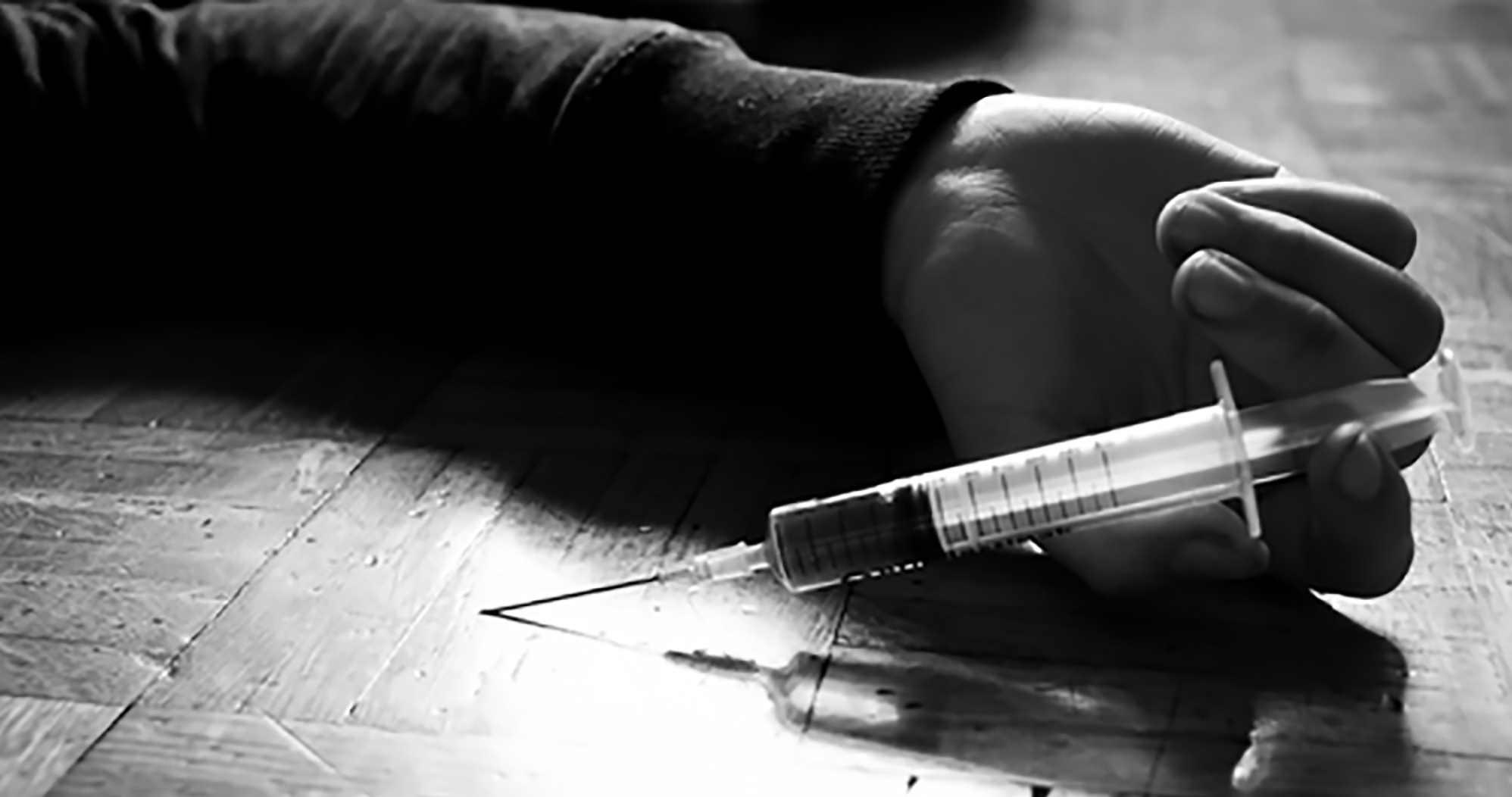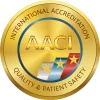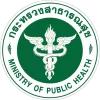Substance addiction and abuse might be global problems, but few developed countries have struggled with them as much as Australia. According to recent reports, around 1 in 20 Australians struggle with substance addiction. And while alcohol remains the most abused substance Down Under, illicit and prescription drugs also contribute to this national problem.
According to the 2019 National Drug Strategy Household Survey (NDSHS), 43% of Australians aged 14 and above have used an illicit drug at some point in their lives, with 16.4% having used such a drug at least once in 12 months prior to the survey. And while using a drug doesn’t have to lead to abuse and addiction, it shows how common illicit drug use is among Aussies.
These high drug use rates also contribute to more Australians seeking professional treatment for drug addiction and addiction-related problems. Many Aussies seek help outside Australia, especially in Thailand, where they can take advantage of high-end rehab centres free of temptations and external triggers.
But why is drug abuse such a common issue in Australia? What are the most commonly used drugs? And how to determine whether you or your loved one requires professional help? We’ll cover that and more in the following comprehensive guide.
Drug Addiction Statistics and Trends in Australia
Before we discuss in more detail the reasons for drug abuse is such a profound issue in Australia, let’s go through several key illicit drug statistics to see the scope of the problem:
- In 2019, approximately 3.4 (16.4%) million Australians used an illicit drug in the past 12 months;
- 43% of Australians aged 14 and over reported using an illicit drug at some point in their life;
- In the 2020-21 period, there were 152,000 drug-related hospitalisations, which accounts for 1.3% of all cases;
- In 2021, 1,704 deaths among Australians were drug-induced – that’s equivalent to 6.6 per 100,000 population;
- Opioids are the most common drug class present in drug-induced deaths – 3.8 per 100,000 population in 2021;
- Cannabis remains the most used recreational drug (11.6% in 2019), followed by cocaine (4.2%) and ecstasy (3.0%);
- In 2021-22, amphetamines accounted for the most drug addiction treatment episodes (24% of all cases), followed by cannabis (19%) and heroin (4.5%);
- Between 2016 and 2019, there was a decrease in non-medical pharmaceutical use in the previous 12 months – from 4.8% to 4.2%.
Why Is Drug Abuse Such an Issue in Australia?
Several factors contribute to such high illicit drug use rates in Australia. Number one is availability. Of course, drugs like cocaine or cannabis aren’t legal in Australia, but since it is one of the leading worldwide holiday destinations, drug distributors and dealers find it easier to smuggle and sell drugs to locals and tourists.
Another contributing factor is the Australian social culture. And while it primarily affects the high drinking rates, it also contributes to growing drug use, as more Australians decide to try illicit drugs out of curiosity or to feel part of the group.
There’s also a link between growing mental health issues and drug abuse among Australians, especially since the COVID-19 pandemic. Cases of anxiety and depression in Australia have grown immensely during the lockdown, and many Australians use drugs to cope with their diseases.
Luckily, more Australians have started to seek professional treatments for their issues, such as The Dawn’s mental health retreat in Thailand. However, many still choose alcohol, drugs, and other substances to cope with their problems.
The Most Abused Drugs in Australia
Cannabis remains the most commonly used illicit drug in Australia, followed by cocaine and ecstasy. The past few years have seen a decrease in illicit pharmaceutical use (e.g., opioids, painkillers, etc.), which contributed to 4.2% of all cases in 2019 (compared to 4.8% in 2016). There was also a decrease in amphetamine use, with 1.3% of Australians reporting using it in 2019.
Cannabis
Cannabis remains Australia’s most commonly used drug, with approximately 11.6% of Aussies aged 14 and over admitting to using it in the past year (2019). And while marijuana is considered to be relatively harmless, it can lead to abuse and addiction.
Some research also suggests a strong link between marijuana use and the development of mental health issues. Currently, marijuana remains a Class B drug in Australia, meaning it’s illegal to possess, use and sell. However, that doesn’t stop Australians from using it more frequently, with 37% of cannabis users in Australia admitting to using it weekly or more often.
If you start to notice you or your loved one shows signs of marijuana dependence, it’s best to seek professional marijuana addiction treatment immediately, as the symptoms of addiction worsen with time.
Cocaine
Cocaine use in Australia has been continuously growing, reaching an all-time high of 4.2% in 2019. That’s a significant increase from 2.5% of cocaine users in 2016. Indeed, the growth of cocaine use in Australia has been a massive concern lately, with cocaine-related hospitalisations growing to 15.6 per 100,000 people.
Cocaine is also highly addictive due to its high-stimulation properties. It can also have severe effects on one’s mental and physical health, which is why seeking cocaine treatment is essential the moment you notice the signs of dependence.
Ecstasy
3% of Aussies have used ecstasy in the past 12 months (2019). That makes Australia the leading country when it comes to ecstasy use. Like many other drugs in Australia, ecstasy use has grown since 2016, rising from 2.2% to 3.0%.
Furthermore, with the Australian Government approving ecstasy for treating particular mental health conditions, there’s a cause for concern that its illicit use will rise even higher. And while many underestimate its effect on mental health, repetitive ecstasy use can lead to brain-related issues, depression, and anxiety.
It’s also highly addictive, which is why one must seek ecstasy addiction treatment immediately after noticing worrying dependence signs.
Amphetamine
While the overall use of amphetamine and methamphetamine has decreased (from 1.4% in 2016 to 1.3% in 2019), abuse of crystal methamphetamine (also known as ice) continues to be a significant problem in Australia. In fact, the frequency of ice use among people using it has grown, leading to abuse and addiction.
Indeed, despite the decreasing number of Aussies using amphetamines, they remain the leading cause of drug-related addiction treatment, with 24% of all treatment episodes being amphetamine-related. Many Aussies addicted to amphetamines seek professional amphetamine addiction treatment outside of Australia. The same applies to Australians looking for crystal meth (ice) addiction treatment.
Heroin
Heroin abuse has always been a major concern in Australia. Unfortunately, it seems that this problem continues to become even more prevalent, with heroin-related hospitalisations in Australia doubling from 2008 to 2018, reaching an all-time high since 2001.
According to the Australian Institute of Health and Welfare, there were 3,527 reported heroin-induced hospital admissions in 2018. The number of heroin-related deaths has also risen, with 604 Australians dying from heroin overdose between 2016 and 2017.
What’s more, with 15,000 Australians admitting to having used heroin at some point in their life (a 50% increase from 2017), heroin remains a prevalent problem in Australia. Fortunately, there are numerous treatment options for heroin addicts, many of whom choose heroin addiction rehabilitation centres outside Australia.
Pharmaceuticals
Although the use of pharmaceuticals for non-medical purposes is decreasing (a decline from 4.8% in 2016 to 4.2% in 2019), their abuse remains a major cause for concern in Australia. Using medications like opioids or benzodiazepines can lead to abuse, dependence, and overdose, which can often be fatal. Indeed, of all 1,644 drug-induced deaths in 2019, 62% were caused by prescription opioids.
Benzodiazepine use has also been a significant problem in Australia, especially since the pandemic-related rise of anxiety issues. The issue here is that while highly addictive, it’s difficult to determine whether someone may have developed opioid or benzodiazepine addiction.
If you start noticing worrying withdrawal symptoms, such as mood swings and headaches, however, it means it’s high time to seek prescription drug addiction treatment. Untreated, such pharmaceutical dependence can lead to overdose and even death.
When to Seek Treatment?
Using drugs occasionally doesn’t make a person an addict. Indeed, while substance use rates remain high in Australia, approximately 1 in 20 substance users have an abuse or addiction problem. The question is, how to determine whether you might’ve developed a drug addiction?
Of course, each drug may have different dependence symptoms, but several common signs may indicate someone has developed a drug addiction. These include:
- using a drug regularly at increasing doses;
- trying to cut down on drug use without succeeding;
- experiencing strong withdrawal symptoms, such as irritation, mood swings, headaches, etc. (these will depend on the drug);
- experiencing constant cravings to use a drug;
- developing a tolerance for the underlying substance;
- putting drug use ahead of work, family, social life, and other responsibilities;
- giving up on social life and family activities to use drugs;
- continuing to use despite knowing you may be physically and mentally addicted to the substance.
If you notice any of the above symptoms, it means you might be addicted and require treatment. Leaving a substance dependence untreated can lead to severe consequences, resulting in changes in brain function, overdose, and even death.
And whether it’s you or your loved one who has developed a drug addiction, the best way to go forward is to choose a top-quality rehabilitation centre, preferably outside Australia, as treatment outside the country can provide numerous benefits.
Why Seek Professional Help?
Many addicts often opt for self-treatment. That’s mainly because treatment programmes in Australia tend to be very expensive. However, the problem is that unsupervised detox can be dangerous, especially if you experience strong withdrawal symptoms. In extreme instances, detoxing alone can even be life-threatening.
That is why seeking professional help with your addiction is more than necessary. And if you’re looking for an option that’s both affordable and effective, choosing rehabilitation outside Australia might be your best shot. And when it comes to that, The Dawn should be your number one choice.
In our Thai rehab and wellness centre, we specialise in all types of drug addiction disorders, ranging from cocaine, marijuana, amphetamine, heroin, ketamine, and prescription drug addiction. Our drug treatment programme includes a supervised drug detox, drug addiction therapy, and wellness therapy for drug addiction:
- Supervised drug detox. Our drug treatment begins with supervised drug detox, where our fully licensed medical team will monitor the entire process to ensure your safety and comfort.
- Drug addiction therapy. The therapy process includes our intensive Twin Pillars treatment model, which combines individual and group therapy sessions that take advantage of multiple treatment methods, including cognitive behavioural therapy (CBT) and mindfulness-based cognitive behavioural therapy (MCBT).
- Wellness therapy for drug addiction. To support your rehabilitation process, our treatment also involves a number of wellness therapies to help bring your mind and body back into balance. These include exercise, meditation, massage therapy, etc.
Why Australians Choose The Dawn Rehab Thailand

The Dawn Wellness Centre and Rehab Thailand remains one of the leading drug addiction treatment destinations among Australians seeking drug and alcohol rehab in Thailand. One of the primary reasons for that is the location.
The Dawn Centre is located in a peaceful and beautiful sanctuary of Chiang Mai, in northern Thailand. During their stay, our patients can access multiple facilities, including therapy rooms, a massage studio, a gym, a swimming pool, and a meditation studio. All that while surrounded by picturesque grassy areas and tropical gardens, free of temptations and triggers.
Another reason why The Dawn is so popular among Australians is our unique approach to addiction treatment. Our treatment process combines an evidence-based Western approach with Eastern-based holistic healing, providing patients with the best of both worlds and run by a team of top-tier addiction treatment and wellness professionals.
Key Takeaways
Illicit drug use remains a major concern in Australia. It’s not uncommon for Australians to engage in drug-related activities, with approximately 43% of them admitting to using drugs at some point in their life. And while that alone doesn’t necessarily mean most of them have developed an addiction, the growing number of drug-induced hospitalisations and deaths indicates that there’s a cause to worry.
The good news is that more Australians with drug addiction problems seek professional help. Many of them opt for treatment outside Australia, with the most popular destination being Thailand. The primary reason for that is the lower cost of treatment outside Australia. Another is the beautiful and peaceful scenery, which can have a tremendous impact on the overall treatment process.
These are also the reasons why so many Aussies choose The Dawn Rehab Thailand as their drug addiction treatment destination. With our unique treatment programmes in the tranquil and mesmerising location in Chiang Mai, our rehab and wellness centre is one of the leading destinations for Aussies searching for a way to take control of their addictions and reclaim their lives.
FAQs
Q: How common is drug addiction in Australia?
A: Drug use is very common in Australia, with over 43% of Aussies admitting to using drugs at some point in their life. And while not all these cases have led to abuse and addiction, the growing number of drug-induced hospitalisations and deaths show that drug abuse and overdose are a major concern in Australia.
Q: What are the signs of drug addiction?
A: Drug addiction can reveal itself in numerous signs, including increased tolerance to the substance, intense withdrawal symptoms, constant craving to use a drug, unsuccessful withdrawal attempts, choosing drugs over social life and work, etc. Of course, the exact set of signs often depends on the drug. These symptoms can also vary from one person to another, which is why it’s often tricky to determine whether a person is addicted.
Q: Where can Australians seek help for drug addiction?
A: Aussies can take advantage of numerous rehab centres and programmes, such as Narcotics Anonymous (NA). There are also several websites with toll-free numbers and forms where Australian addicts can reach out to receive support and information about their problems. You can also reach out to The Dawn team to assess your addiction and provide you with a specialised treatment programme tailored to your specific case.
Q: Is drug addiction a disability in Australia?
A: Yes, as confirmed by the Federal Court, dependence on opioids and drugs is a disability under the Disability Discrimination Act 1992. The one exception is the state of New South Wales. The remaining states, however, treat drug addiction as a disability.
Q: Why do Aussies seek addiction treatment outside of Australia?
A: Many Aussies seek treatment outside Australia due to lower costs and a more rehabilitation-friendly environment. By taking advantage of a rehab programme in centres like The Dawn, Australians can increase their chances of a successful recovery in a trigger-free and tranquil environment.
Resources
- https://www.aihw.gov.au/reports/illicit-use-of-drugs/illicit-drug-use
- https://www.aihw.gov.au/reports/alcohol-other-drug-treatment-services/alcohol-other-drug-treatment-services-aus/contents/summary/drugs-of-concern
- https://www.thecabinsydney.com.au/blog/why-is-australia-the-1-country-for-drug-abusers/
- https://www.health.gov.au/our-work/drug-help/drug-information/drug-trends-and-statistics
- https://www.addictionhelp.com/addiction/australian-statistics/
- https://www.aic.gov.au/statistics/drug-use
Related Posts
 Guide to Addiction & Mental Health in Australia
Australia, as with many other countries, isn’t alone in facing a growing problem with addiction and mental health-related issues. Dealing with this growing crisis and the complexities of addiction and...
Guide to Addiction & Mental Health in Australia
Australia, as with many other countries, isn’t alone in facing a growing problem with addiction and mental health-related issues. Dealing with this growing crisis and the complexities of addiction and...
 Alcohol Addiction Problems in Australia
Excessive alcohol consumption remains a major concern in Australia. According to the official National Health Survey for 2020-21, one in four Australians aged 18 and over exceeded the national alcohol...
Alcohol Addiction Problems in Australia
Excessive alcohol consumption remains a major concern in Australia. According to the official National Health Survey for 2020-21, one in four Australians aged 18 and over exceeded the national alcohol...
 The Process of Heroin Detox : What You Should Know About Heroin Detoxification, Withdrawal and Treatment
Starting the healing process after heroin abuse requires the elimination of heroin in the body through a process called detoxification, or detox for short. This initial step in the treatment...
The Process of Heroin Detox : What You Should Know About Heroin Detoxification, Withdrawal and Treatment
Starting the healing process after heroin abuse requires the elimination of heroin in the body through a process called detoxification, or detox for short. This initial step in the treatment...
 Anxiety in Australia: Facts, Statistics & Treatment
We all feel anxious from time to time. For many, it’s a natural reaction when facing a stressful situation. Once that under-pressure moment is over, everything goes back to normal....
Anxiety in Australia: Facts, Statistics & Treatment
We all feel anxious from time to time. For many, it’s a natural reaction when facing a stressful situation. Once that under-pressure moment is over, everything goes back to normal....





